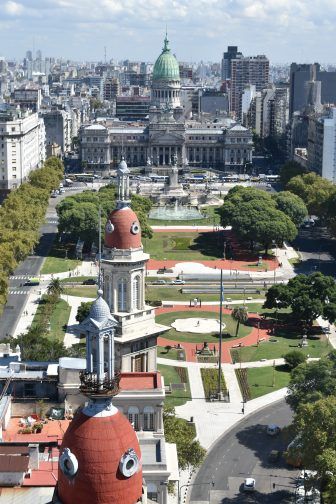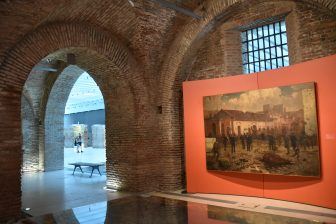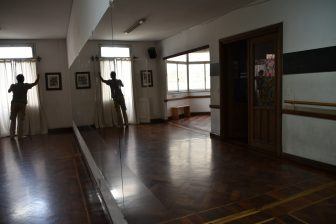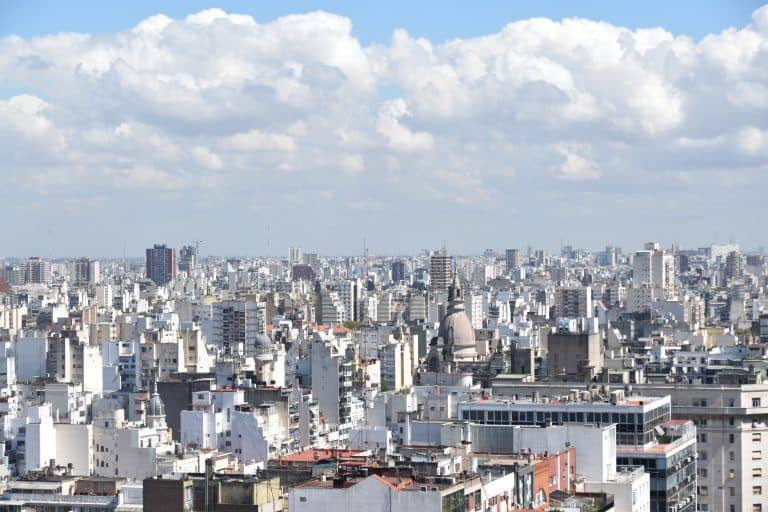
[ Mar.2018 ] I continue talking about Palacio Barolo, the building in Buenos Aires in Argentina.
After listening to the explanations on the 4th floor, we moved up to the 14th floor.
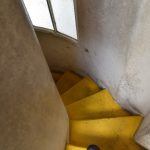
From here, we had to climb up the staircase.
In fact, there was a very small lift here to go up higher, but this lift can only be used by the workers in the offices up there. The tourists like us had to take the effort to go up the stairs to get to Heaven.
Climbing up the staircase was not easy, not only because of the 115 steps, but also because the space was getting narrower and narrower. It took a lot of effort, especially for chubby people.
The 20th floor was the observatory.
It was a fine day, so we could look out over the whole city.
To be honest, the view was not particularly beautiful and it was similar to the one in Tokyo.
In fact, in Buenos Aires, new buildings and old ones are mixed without any order and, on that point, it was quite similar to any of the cities in Japan.
The best view was from where we could see the Palacio del Congreso and the square in front.
After taking many photos of the view, we went even higher to the top of the building, the 22nd floor.
Here, there was a very small room with the equipment for a lighthouse.
The designer of the building, Mario Paranti, had a grand plan at first that a beam from here and a beam from a similar building he was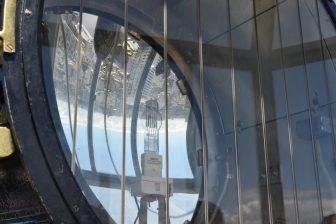
But in reality, because Palacio Barolo was not on the river, which was thought to confuse the boats, this lighthouse was never used.
Also, they never made the lighthouse on top of the Palacio Salvo, the counterpart in Montevideo, in the end.
According to our guide, in fact, even if they had tried, the beams would 
After that, we came down to the floor where there was a terrace and we went out there to look at the top part of the building.
This top part, which represents Heaven, was inspired by the Indian temple ‘God of Love’, because in ‘The Divine Comedy’, Dante was saved by Beatrice, who was a sort of a symbol of love.
At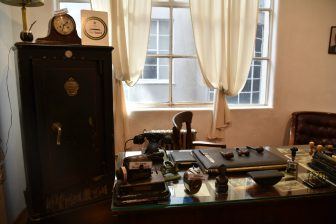
In a small space, there was the old office furniture which is of the sort we often see in films, a photo of Mr. Barolo, the busts of Dante and Beatrice, and so on.
We spent as long as an hour and a half to look around this building, which was very interesting and worthwhile.
Someday, I would like to visit Palacio Salvo in Montevideo, too.

